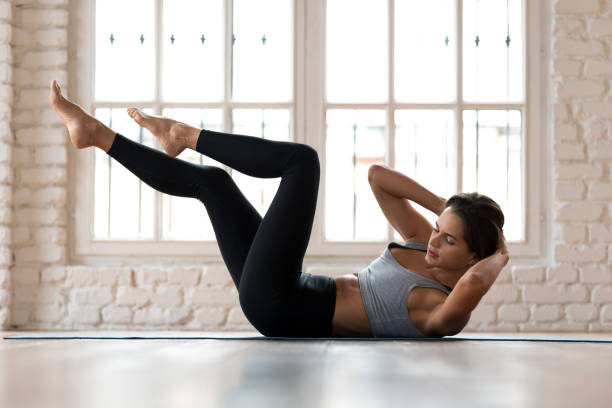10-minute morning workouts to boost circulation
A short, focused morning routine can prime your body for the day by improving blood flow, raising core temperature, and activating muscles. These 10-minute sessions combine simple cardio, mobility, and light strength moves to support circulation, posture, and energy without equipment. Read on for practical sequences, nutrition and hydration tips, and recovery ideas you can use immediately.

Starting the day with a brief, intentional movement session can significantly improve circulation and alertness. A 10-minute routine focused on gentle cardio, mobility, and targeted strength helps push blood through muscles and joints, delivering oxygen and nutrients where they’re needed. Short workouts are easy to adapt to fitness level, fit into busy schedules, and complement nutrition and hydration strategies that further support healthy blood flow and skin health. Below are concise, research-aligned approaches and practical sequences you can use immediately.
What short workouts increase circulation and endurance?
A combination of low-impact cardio and interval-style bursts works well in a 10-minute window. Try 30–45 seconds of brisk marching or high knees followed by 15–20 seconds of marching in place to recover; repeat for 3–4 rounds. This elevates heart rate, improves peripheral circulation, and gently taxes endurance without causing excessive fatigue. Include full-body movements such as bodyweight squats or reverse lunges to activate large muscle groups, which help pump blood back to the heart more efficiently during and after workouts.
How does cardio and mobility improve circulation?
Cardio raises heart rate and increases blood flow throughout the body, while mobility work keeps joints moving through their ranges, promoting microcirculation around cartilage and connective tissue. In a 10-minute session, alternate 60 seconds of light cardio (jumping jacks or fast walking in place) with 60 seconds of mobility moves like hip circles, ankle rolls, and thoracic rotations. These mobility sequences reduce stiffness, support joint lubrication, and make it easier for arteries and veins to expand and contract during activity.
Can strength, resistance, and posture help circulation?
Yes. Strength and resistance exercises stimulate muscle contractions that squeeze veins and help return blood to the heart, improving venous circulation. Use bodyweight resistance—push-ups, seated leg raises, calf raises—or light resistance bands for added stimulus. Pay attention to posture: upright chest and engaged core reduce compression of abdominal vessels and encourage smoother blood flow. Short sets (8–12 reps) performed with controlled tempo in a morning circuit will improve muscular engagement and complement cardio without needing lengthy sessions.
How do Pilates and yoga support flexibility and circulation?
Pilates and yoga emphasize breathing, alignment, and controlled movement, which can enhance both circulation and flexibility. Incorporate 3–5 minutes of sun salutations or a mini Pilates roll-down series into a 10-minute routine to combine mindful breathing with spinal mobility. These practices stimulate the parasympathetic system when performed with slow, rhythmic breaths and can support vascular function by improving posture, lengthening tight muscles, and reducing compressive patterns that impede blood flow.
What role do nutrition, hydration, and mealprep play?
Hydration is fundamental for maintaining blood volume and ensuring efficient circulation; start the day with a glass of water and consider adding electrolytes if you sweat regularly. Nutrition influences circulation through sodium balance, omega-3 fatty acids, and antioxidants; a balanced breakfast with lean protein, whole grains, and fruit supports energy and vascular health. Mealprep can make consistent morning choices easier—prepare overnight oats, boiled eggs, or smoothie packs to pair with your 10-minute workouts so you get both movement and nutrient support without added decision fatigue.
How should recovery and skincare be included in a morning routine?
Recovery in a short routine means prioritizing gentle cool-downs, breathing, and light stretching to normalize heart rate and venous return. Spend 1–2 minutes on diaphragmatic breathing and 2–3 minutes on calf and hamstring stretches to reduce post-exercise pooling in the lower limbs. For skincare, improved circulation often promotes a healthy complexion by increasing nutrient delivery and aiding lymphatic drainage; use gentle facial massage or a cool rinse post-workout to support skin tone and reduce puffiness. Remember that adequate sleep and gradual progression in workouts are essential for recovery and longer-term circulatory benefits.
Conclusion A focused 10-minute morning routine that blends short cardio bursts, mobility drills, and light resistance can meaningfully boost circulation and daytime energy. Complementing movement with proper hydration, thoughtful nutrition, posture awareness, and brief recovery practices amplifies benefits for both systemic circulation and skin health. These short sessions are flexible, scalable, and easy to integrate into everyday life, providing a practical way to support ongoing vascular function and overall well-being without requiring long workouts or specialized equipment.





